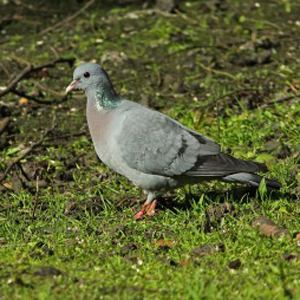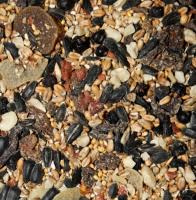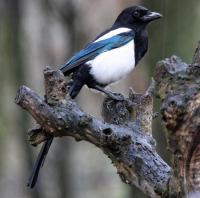- Home
- FAQs
- Customer Video Gallery
- Customer Photo Gallery
- Bird Facts
- Bird Food Blog
- Bird Information
- Feeding Advice
- Small Animal Information
- A to Z of Guinea Pigs
- A to Z of Hamsters
- A to Z of Rabbits
- Basic Care for Guinea Pigs
- Basic Care for Hamsters
- Basic Care for Rabbits
- Basic care for Chinchillas
- Basic care for Ferrets
- Basic care for Gerbils
- Basic care for Mice
- Basic care for Rats
- Buying a Healthy Small Animal
- Does your Reptile need a Licence
- Equipment for Ferrets
- Equipment for Hamsters
- Equipment for Mice
- Equipment for your Chinchilla
- Equipment for your Gerbil
- Equipment for your Guinea Pig
- Equipment for your Rabbit
- Keeping a House Rabbit
- Dog Information
- Cat Information
- Customer Information
- Fat Balls
- Suet Pellets
- Straights
- Seed Mixes
- Suet Treats
- Mealworms
- Bird Feeders
- My Account

| Scientific Name | Columba oenas |
| Breeding | March |
| Fledge Days | 27-28 |
| Incubation Days | 16-18 |
| Lifespan | 3 years |
| Number of Clutches | 2-3 |
| Number of Eggs | 1-2 |
| Size | 33cm |
| Weight | 300g |
| Wingspan | 66cm |
Bird Family : Pigeons and Doves
Stock Dove Facts - Information About Stock Dove
Stock Dove - Columba Oenas
The Stock Dove is only likely to be confused with the Wood Pigeon, however, the Wood Pigeon is far larger, far commoner and is less habitat dependent than Stock Dove.
The Stock Dove is similar in colouration to Wood Pigeon but lacks white in the plumage. It is common throughout the UK, but missing in northern Scotland and parts of Northern Ireland.
Identification:
Adult
- The Stock Dove is similar in size to the Collared Dove, around 31cm, its colouration however, is more in line with Wood Pigeon.
- It is a dark grey dove with no white markings whatsoever.
- It will often associate with feeding flocks of Wood Pigeon from which you need to separate it.
- Sexes alike.
- Tail is dark bluey grey with broad black terminal band.
- Rump, back and mantle all dark bluey grey however the rump is a little paler.
- Head is also bluey grey with irridescent green neck patch (No White).
- The eye is dark and bill pale horn with a very small white shield.
- The folded wing is blue grey with black primary feathers and partial black wingbar (No White).
- Underparts; breast is grey with a salmon pink wash, belly pale grey.
In flight the bird appears fairly uniform grey from below, look for dark primaries, dark trailing edge to the wings and dark tail. - No White on wing or neck.
- Legs are dark pink.
Juvenile
- Juveniles appear from May onwards and are similar to adults, they lack the irridescent green neck patch and look a little paler headed, they have a dark bill and dark eye.
Status and Distribution
The Stock Dove is a reasonably common breeding resident in the UK with over 300 thousand pairs. The Stock Dove occurs in all counties and habitat types throughout the UK except for Northern Scotland and parts of Northern Ireland. Its strong holds are from the midlands down to the South West.
Habitat/Food
Stock Doves occur in all habitat types throughout the UK, woodlands, parks, gardens, farmland, hedgerows, however they are far shyer than Wood pigeons and prefer undisturbed sites. They can be seen feeding in arable farmland in small groups often associating with large Wood Pigeon flocks.
Rare in the garden, Stock Doves nest in cavities of mature trees, feeding on seed, shoots, vegetable matter and insects often on farmland, clearings and woodland edges.
Song/Call
The Stock Doves song is quiet, low and mournful. It is a repeated ‘whooo-hu whooo-hu whooo-hu whooo-hu whooo- hu’ Repeated many many times, weaker at the beginning and building slightly.
The following food is favoured by Stock Dove


















